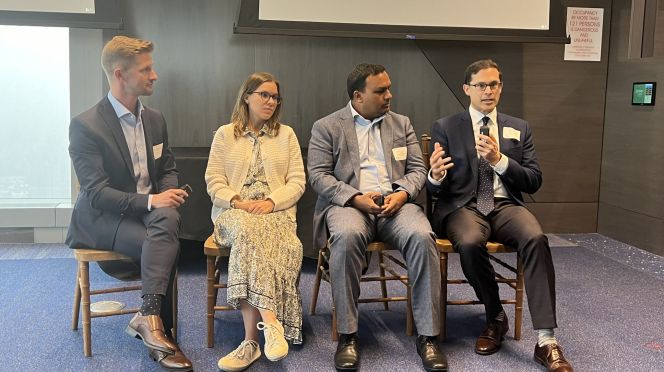As small and micro loans come under pressure, stress on small finance lenders could dent consumption further | Business News
Early signs of stress in India’s microfinance institutions, small finance lenders, and unsecured personal loans are beginning to show up, primarily driven by escalating borrower indebtedness.
Latest data reveals a surge in delinquencies during the first half of FY25, with multiple analysts predicting this trend to persist into the next half year, casting a shadow over the asset quality of underlying loans.
As a result, small and micro loans face significant risks to their growth and profitability, sparking concerns about the sector’s resilience in these challenging times, analysts and rating agencies said.
On November 13, ESAF Small Finance Bank, which used to focus on micro loans, reported a jump in gross non-performing assets (NPAs) to Rs 1,279.3 crore (6.9 per cent of advances) for the quarter ended September 2024 from Rs 399.1 crore (2.6 per cent) a year ago due to its concentration on micro loans.
Its share price has plummeted from a 52-week high of Rs 82.26 to Rs 39.01 now.
Aviom India Housing Finance informed its lenders earlier this month about an ongoing audit by the National Housing Bank (NHB) in the wake of the discovery of fraudulent transactions during a recent onsite supervisory inspection.
Saying that there could be a delay in repayments to creditors, Aviom said in a letter to lenders that, “the NHB audit was initiated following the regular on-site supervisory inspection that resulted in observations, including that the statement of accounts of mutual fund(s) appear to be managed.”
CRISIL has estimated that the gross non-performing assets (NPAs) of small finance banks (SFBs) are expected to move up to 2.9 per cent by the end of fiscal 2025 from 2.3 per cent as on March 31, 2024.
“As a result, credit cost is set to rise 40 bps (basis points) to 1.4 per cent. The impact of the expected delinquency trends will not be uniform, though. The extent of rise in gross NPAs and credit costs across SFBs will vary based on the extent of their exposure to the vulnerable segments,” said Vani Ojasvi, associate director, CRISIL Ratings.
Indicating the rising indebtedness, credit card outstanding rose to Rs 2.71 lakh crore by September 2024 from Rs 2.30 lakh crore in September last year.
The Reserve Bank of India stepped in to check the rampant rise in the indebtedness and delinquencies in the personal loan segment with more restrictions last year, leading to a decline in the growth in the overall personal loan book of banks to 5 per cent as of September this year from 18 per cent a year ago.
ICRA said delinquencies in the microfinance institutions (MFI) sector rose to 2.4 per cent by June 2024 from 2.1 per cent in March, while highlighting the increasing delinquencies in the microfinance sector, which is likely to push up the NBFC-MFI credit costs to 320-340 bps — one basis point is one hundredth of a percentage point — in FY25 from 220 bps in FY24.
The evolving asset quality risks will dampen sectoral growth and earnings in the current fiscal.
ICRA expects NBFC-MFIs’ assets under management (AUM) growth to dip to 17-19 per cent in FY25 from 29 per cent in FY24.
Microfinance institutions faced a significant rise in delinquencies during the first quarter of fiscal 2025, according to Crisil.
Early-stage delinquencies (0+ and 30+ days past due) increased by 110 basis points and 55 basis points, respectively, compared to the preceding March quarter.
Four key factors contributed to this decline in portfolio quality: lending to over-leveraged borrowers, debt-waiver campaigns, high field-staff attrition, and operational challenges due to elections and extreme weather.
As a result, average monthly collection efficiency dropped to 96 per cent in Q1 FY25 and further to 94 per cent in Q2, down from 98 per cent in the previous fiscal, CRISIL said.
According to Jyoti Prakash Gadia, managing director, Resurgent India, while the banking industry as a whole is showing resilience with a gradually reduced NPA, stress is visible in microfinance, small finance, and unsecured loans.
“This is primarily because of the relatively more aggressive approach adopted by these institutions in granting loans. The risk assessment and compliance criteria have been apparently diluted with the element of flexibility in selecting the borrowers,” Gadia said.
Target hunting with an intent to expand quickly has prompted sanctions on some borrowers who did not have adequate cash flows to fall back upon for repayment, leading to stress.
The overall economic scenario at the rural and semi-urban level has also not improved to a level of buoyancy, thereby creating stress for small loans, Gadia said.
In fiscal 2025, microfinance loans and unsecured personal loans, where early signs of stress are visible on account of a rise in borrower indebtedness, will see a moderation in portfolio quality.
Sub-segments within secured asset classes, catering in part to a similar customer segment, could also see higher delinquencies, CRISIL said.
The RBI has recently imposed a ‘cease and desist order’ on some NBFC-MFIs, preventing them from sanctioning and disbursing loans.
“The restrictions were due to issues related to predatory pricing, insufficient transparency in disclosures, and improper evaluation of household income and fixed monthly liabilities. Additionally, concerns have been raised about lending to customers with multiple fake voter IDs, often categorised as new-to-credit (NTC) customers, which further undermines the integrity of the lending process,” CareEdge Ratings said in a report.
In October, the RBI cautioned non-banking finance companies against aggressively pursuing growth without building up sustainable business practices and risk management frameworks, commensurate with the scale and complexity of their portfolio.
“The Reserve Bank is closely monitoring these areas and will not hesitate to take appropriate action, if necessary,” RBI Governor Shaktikanta Das said.
Driven by the significant accretion to their capital from both domestic and overseas sources, and sometimes under pressure from their investors, some NBFCs — including microfinance institutions (MFIs) and housing finance companies (HFCs) — are “chasing excessive returns on their equity”, he said.
Furthermore, the RBI has raised concerns regarding the practice of loan netting by MFIs and has instructed certain banks and MFIs to ensure that this does not lead to ‘ever-greening of delinquent loans’.
The increasing borrower indebtedness is compounded by various factors, such as heatwaves, general elections, and political movements like the “Karja Mukti Abhiyan (loan waiver scheme).”
This challenge is further aggravated by the weakening of the joint liability group model, characterised by a notable decrease in centre attendance and diminished peer pressure and collective accountability, which have historically helped maintain low default rates, CareEdge said.
The profitability of small finance banks, measured in terms of return on assets (RoA), will moderate around 40 bps to 1.7 per cent this fiscal from 2.1 per cent for FY24 due to lower net interest margins (NIM) and higher credit costs, CRISIL said. The overall profitability will continue to be significantly influenced by credit costs.
Small finance banks are bracing for a potential surge in delinquencies and credit costs, driven by economic stress, and rising borrower indebtedness.
SFBs, catering to relatively vulnerable customers, tend to experience higher delinquencies during economic downturns, as witnessed during the pandemic.
“Early signs of stress are visible in microfinance and unsecured personal loans due to increasing borrower indebtedness,” CRISIL noted.
“SFBs must proactively manage risk and tighten lending norms to mitigate potential losses,” it said.
“The challenge is higher for unsecured asset classes such as personal loans, business loans, and MFIs. The impact on the MFI segment is higher,” said Sanjay Aggarwal, senior director, CARE Ratings.
He expects credit cost for NBFC-MFIs to be at 7 per cent in FY2025, compared to 2.5 per cent in FY24.
Analysts see a significant slowdown in the loan book of NBFCs due to the higher base effect, the reduction in bank funding to NBFCs and the tightening of underwriting standards by non-bank lenders.
“Overall, there will be a slowdown in the loan growth of NBFCs as bank funding to these entities has reduced. The lower funding is because the RBI wants growth in retail loans to come down as certain borrowers are overleveraged, which increases the risk of higher defaults,” said a banking analyst.
CAUTIOUS APPROACH NEEDED
The expectations of significant improvements in future earnings and social aspirations have led to a substantial increase in unsecured borrowings by new consumers, and this portfolio, particularly of NBFCs and microfinance institutions, has grown faster. The delinquencies have correspondingly grown in the absence of adequate generation of income and surplus impacting the repayment capacity, Gadia said.
Experts said it’s a matter of concern and a careful approach with brakes on fresh sanctions in these segments is needed. In addition, stronger recovery efforts are also called for to bring in control of the overall position.
The regulator has taken suitable steps in this direction to maintain the desired balance and order in the portfolio.
The small loan industry faces significant challenges beyond financial and operational risks, including high staff turnover and rising fraud, both of which disrupt client relationships and loan recovery.
These issues, coupled with vulnerabilities to socio-political risks and natural disasters, further complicate the already difficult operating environment for NBFC-MFIs, making 2025 a challenging year ahead.
However, despite operating in a vulnerable segment, the NBFC-MFI sector has consistently shown resilience, overcoming challenges like Covid-19 and demonetisation.
Its ability to recover and adapt has earned continued investor support, highlighting the sector’s strength and its critical role in financial inclusion.
CareEdge Ratings expect that the sector will also navigate through the current stress and continue playing a vital role in serving underserved communities.








